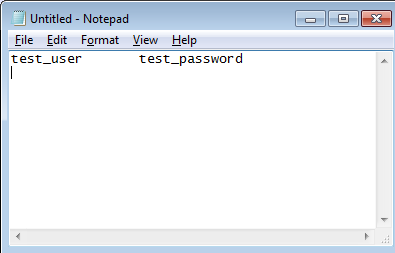How to paste KeePass passwords with Keybreeze macros
Keybreeze can paste custom text into text fields using text functions, and it can automate repetitive mouse clicks and keystrokes with macros. However, both text functions and macros are stored in plain text on your computer. If you store passwords in text functions or macros, and someone gains access to your computer, they could potentially find these files and open them in Notepad or another text editor and see your passwords.
To securely use passwords in text functions and macros, you can use a free, open source password manager called KeePass, which lets you store your passwords in an encrypted file. One of the global hotkeys in KeePass is CTRL + ALT + A, which will look at the current window title on your screen. If the window title matches an entry's title, KeePass can automatically type your username and passwords into those fields and press Enter. The default sequence is {USERNAME} {TAB} {PASSWORD} {ENTER}, but this can be changed for each entry. See the Auto-Type commands on the KeePass website for a complete list.
The CTRL + ALT + A shortcut in KeePass can be used with a Keybreeze macro for even more automation. For example, you can create a Keybreeze macro to open one of your common websites (or multiple websites). The macro can then press CTRL + ALT + A to invoke KeePass, and KeePass will type your username and password into those fields and press Enter. The macro can then perform other tasks once you are logged in.
This post will show you how to incorporate your KeePass passwords with a Keybreeze macro.
1. To start, download KeePass if you do not already have it, create a new database, and set a master password to secure it.
2. Open KeePass and add a new entry. Here is an example that references Notepad.

3. Once you add the entry in KeePass, press the Keybreeze hotkey and type macros [create] as a keyword. Start Recording and then press F12 or another key to stop recording. In the text editor, the first command will be the Keybreeze entry you want to launch. This could be the website for your bank, credit card, email account, etc. We will use Notepad here so you can see how it works:
<keybreeze entry="notepad">
You may need to add a keyword in Keybreeze that opens your program or website first.
4. Next, you will want to wait for the window to open. Use the <delay> command or the <waitforwindow> command to wait for this.
5. Once the window is open, you want to simulate CTRL + ALT + A to invoke KeePass to enter your username and password. You can do this by pressing 'Record more' and pressing CTRL + ALT + A, or you can copy and paste the following.
<keydown key="LControlKey">
<delay time="250">
<keydown key="LMenu">
<delay time="203">
<keydown key="A">
<delay time="125">
<keyup key="A">
<delay time="31">
<keyup key="LMenu">
<delay time="16">
<keyup key="LControlKey">
6. Press the 'Play back' button to test your macro. It should launch the program/website from Keybreeze and then press CTRL + ALT + A to invoke KeePass. KeePass will then type your username, press tab, type password, and press Enter:

You can configure your macro to perform more actions once you are logged in, or you can configure it to log into other websites. Once you are finished, save the macro and add it to Keybreeze.
Note: If you keep KeePass running all the time, make sure you lock your computer when you are away so that others do not open KeePass and see your passwords. You can lock your Windows computer by pressing Windows Key + L (you may need to set a password in Windows first). For extra security, you can open KeePass and click Tools > Options > Security tab, and configure it to lock after a period of inactivity or after switching windows. To hide KeePass from the task bar, click Tools > Options > Settings > check 'Minimize to tray instead of taskbar.'